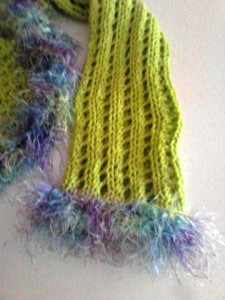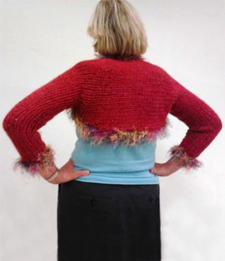It is said that the longest journey starts with the first step. So it is true for those who want to learn to sew or embark on their first sewing classes.
Many places you don’t even need to have your own machine, but once you begin, you will find that you want to work on your projects on your own time and will soon find yourself seeking out a sewing machine that is right for you. Your first sewing machine may come to you as a hand me down or you may purchase a new one.
Electronic machines with a lot of options are available at a very reasonable price( under $200) and it’s not necessary to purchase a premium brand or anything high end if you are just beginning.Either way you will want to have the instruction book if possible, if you don’t, you may be able to find it on line.
You will also need a few needles in several sizes (9,11,14,16) and a couple of extra bobbins. Other materials you will need to begin with are a sewing box. Tackle boxes work well or almost any type of plastic craft box with compartments, a secure closure and a handle will work.
In your sewing box, you will need to have a pin cushion, straight pins, a tape measure, needles for hand sewing, basic colors of thread, black, white and natural, a fabric scissors or you may even opt to add a rotary cutter, a paper scissors, a small nippers for at your machine, a seam ripper and a tracing wheel, preferably with spikes or at the least, serrated. Your collection of materials and tools will grow as you learn.
Finding a Teacher
Finding a place to learn is your next quest. Sewing has become a bit of a lost art that is in the midst of a revival as bad economic times is leaving a space to create a renaissance of sorts for all of the skills that our mothers and grandmothers had before we became a throw away society.
Many community colleges offer adult education classes and there are also small sewing instruction companies popping up all over…. Of course, you may say, why should I pay when U Tube is free? Well of course it’s free but the snippets are short and often broken up. You will probably find that you can only get so much for free, and then it will take you to a page to sign up for on line classes.
I never learned from an online class so I can’t comment as to how well it could work for you. I can tell you that in the beginning, you will need a patient, experienced instructor to hold your hand, encourage you and teach you not only the in and out’s of your exact machinery, but to also put you on the right path to develop good sewing habits so your projects will look professional, fit, and make you feel good about your creation!
Your Measurements & Pattern Selection
So, you are ready to start sewing something. But what? There are many simple projects like purses that you get online, but lets talk about commercial patterns.
As you get ready to march to your local fabric store, go armed with your basic measurements. These critical basic measurements are your bust, your waist and your hips.
To take these measurements, wear a good support bra, bring the tape measure around your back even with your bust and take a relaxed measurement at the fullest point.
Do the same with your waist ( your true waist is about 1″above your belly button, NOT where your jeans rest!) and finally, your hip at it’s fullest point which is between 7-8 ” below your true waist.
Most fabric stores like Joannes, have large catalogs of all kinds of patterns. Simplicity brand is just as it state, although the fit is not always the best, McCall’s is a little better, Butterick is generally a good fit and was the very first paper pattern available way back in the late 19th century!
Vogue patterns tend to be very expensive and more difficult. Watch for a sale to stock up on your patterns. Look for a style that will flatter your body shape, is rated as “easy” and is made from a woven vs. a knitted fabric.
Compare the measurements on the envelope to yours to know what size to buy. Just because you buy an 8 in the store, does not mean you need an 8 pattern.
If your measurements don’t match the envelope exactly, go with what is the closest.The patterns are kept in the drawers under the catalogs and you may need a clerk to help you find your choice.
This envelope contains the full size tissues pattern in three sizes, full instructions of how to sew, how much fabric to buy, what notions you will need like inter-facings, buttons or zippers and fabric suggestions.
Fabric Selection
On the back of the envelope you will also find suggested fabrics. If you don’t know very much about fabrics, hopefully, the staff at the store can point you in the right direction. Most of your woven fabrics will come 45/48″ wide.
Follow the back of the envelope to know how much you need to buy. If there is a sale table, or a remnant table that is often a great way to get discounts on fabric. Fabric is rolled onto bolts with the ends draped over so you can see the pattern.
Look under the draped part to find the price per yard, the content and the care. Look for something machine washable, not too see sheer, medium body weight and of a comfortable fiber like cotton or cotton rich. Don’t forget your matching thread and zippers or buttons! To match the thread, unroll a little bit and hold against your fabric to find best match. I recommend dual duty in a 50 or 60 weight. This is a poly core with cotton wrap so it’s strong but holds great color and does not shrink. You will also need to purchase an interfacing. That is an unseen layer that you will apply to certain area to give them strength and body.
So now you will be ready to learn to sew with baby steps. Watch for my next blog to know how to get started!




